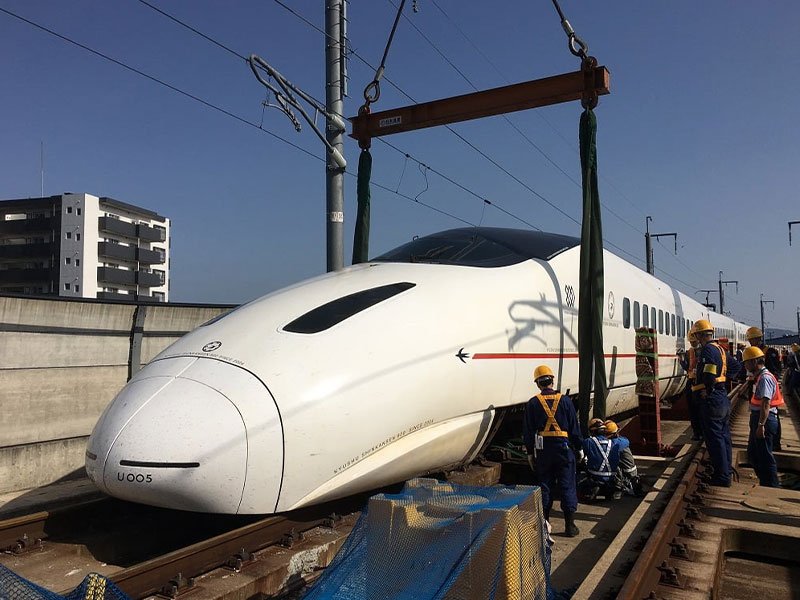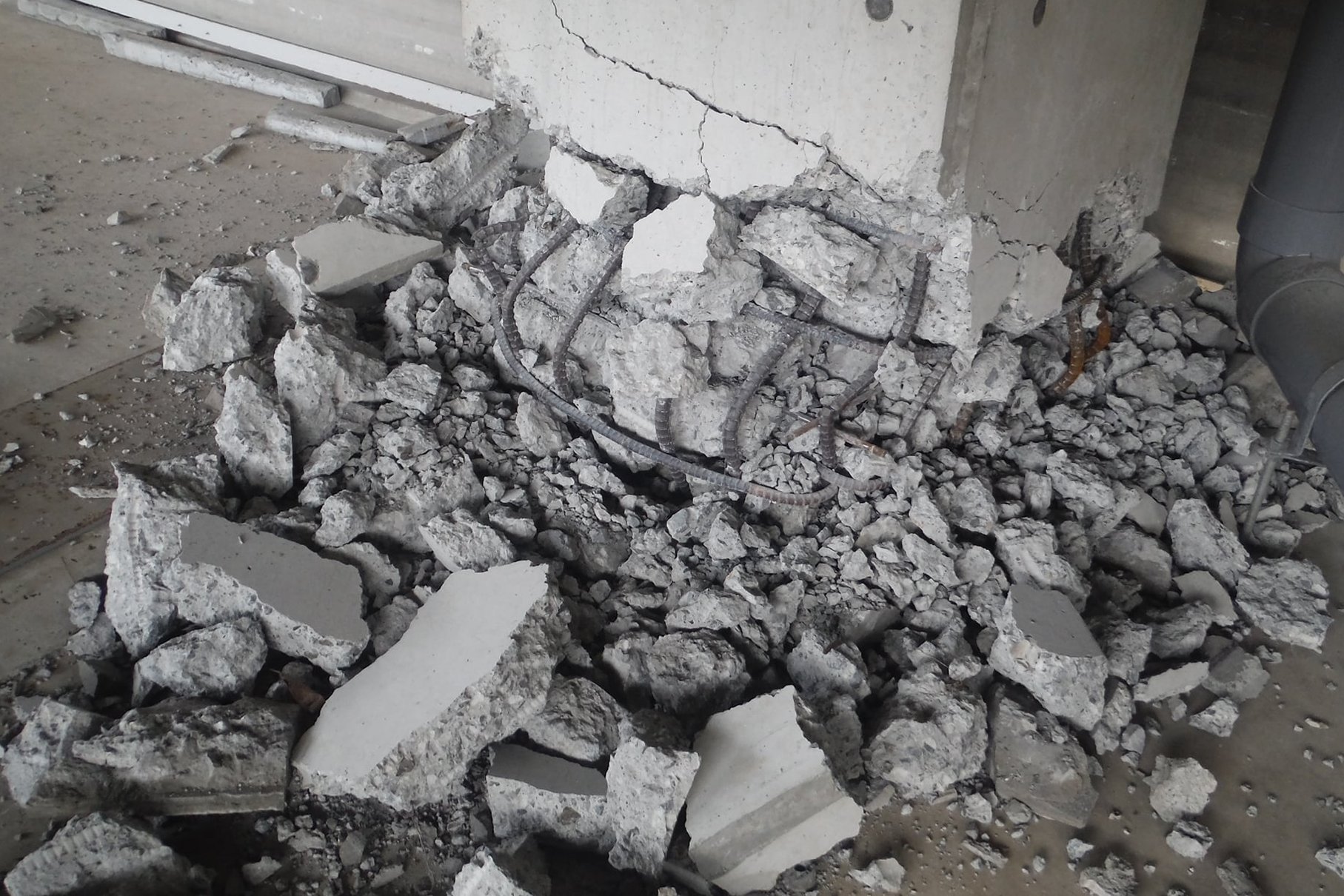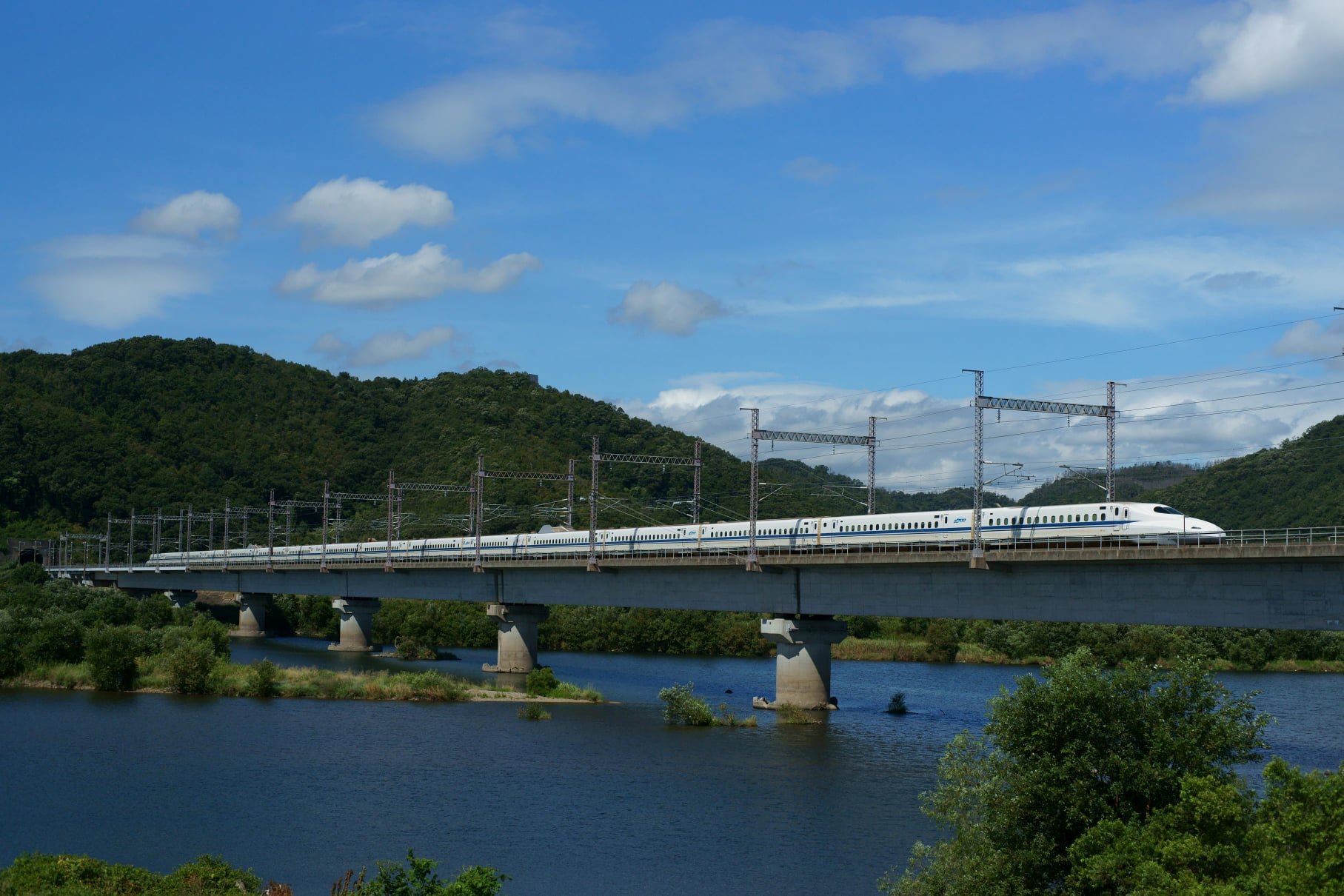
Countermeasures against earthquakes ~Preparation starts from the construction stage~
The Tokaido Shinkansen, running between Tokyo and Osaka, adopts TERRA-S (Tokaido Shinkansen Earthquake Rapid Alarm System) to immediately stop trains before earthquakes occur. TERRA-S is a system utilizing seismometers installed along the Shinkansen line, on the coast, inland areas, etc. that issues early warning by detecting early microtremors (P-waves) arriving ahead of the main tremors (S-waves) of an earthquake. This enables braking and stopping the trains before the actual tremors reach the wayside.
In addition to such early warning systems, railway equipment is installed on the tracks to prevent the Shinkansen from derailing when tremors occur. The equipment was developed by obtaining knowledge from past earthquake experiences, and continues to be developed to ensure passenger safety.
The Kyushu Shinkansen made its full opening in 2011 as an essential transportation infrastructure for Kyushu island's economy, society, and tourism, connecting 260km from north to south in an hour and a half.
In 2016, huge earthquakes (magnitude 7) struck the Kyushu and Kumamoto regions of Japan twice in three days. These earthquakes caused tremendous damage to the area: many lives were lost, 160,000 houses were damaged including total collapse, roads were severed, and lifelines such as water and electricity were cut. Even under such circumstances, the Kyushu Shinkansen, connecting Hakata and Kagoshima-chuo, detected the early microtremors and stopped the trains immediately, preventing casualties to passengers and trains in service, and minimized severe damage to heavy structures related to train operation. This was the outcome of safety measures such as the earlier mentioned warning system, and strict seismic standards applied during the construction stage for Shinkansen running in Kyushu, a region known for numerous earthquakes and natural disasters.
Nevertheless, in addition to damages to civil engineering and electric facilities, the derailment of a deadhead train heading to the yard gave the impression that it would take a considerable amount of time before full restoration of the entire line.
Long-awaited, the Kyushu Shinkansen contributed to regional revitalization and has been loved and used by the people. Staff having trained themselves in anticipation of an emergency situation were able to stand up instantly to restore the Shinkansen quickly. They immediately leveraged their experience, gathered wisdom and worked in unison for restoration. As a result, while deep scars of the earthquake still remained in the town, the Kyushu Shinkansen restored its entire line in less than two weeks after the earthquake, giving courage and hope to the people affected by the disaster and contributing to the recovery from devastation.
The full restoration of the Kyushu Shinkansen demonstrated the importance of utilizing the lessons from the past, adopting the latest countermeasures to anticipate disasters during the construction stage, and elaborating preparations on a daily basis, such as training.
In addition to responding to torrential rains and earthquakes, the Shinkansen has taken all kinds of measures against winds, tsunamis, snow, landslides, and fallen stones, with the highest priority given to the safety of passengers and staff, making use of accumulated experience and state-of-the-art technology.
Both hardware and #software measures are important
Countermeasures against natural disasters are not enough by just implementing hardware equipment. Having responsible and trained staff who can handle emergencies calmly with clear judgment and are capable of safely evacuating passengers and conducting safety checks is critical. The operation of the Shinkansen is supported by many staffs, not only station staff and crew, but also by the backroom players; conductors who supervise operation at the OCC, engineers who manage maintenance of rolling stock, civil and electric equipment and so on. They undergo disaster response training in their daily work and have demonstrated their abilities in the field of many natural disasters. Hardware, symbolized by equipment and software, such as capable staff and education that support such equipment, are two wheels of a cart, that perfects measures against disasters.
Unprecedented natural disasters that exceed our imagination are likely to continue and occur elsewhere. The Shinkansen, responsible for many lives on board providing public transportation with its critical mission of ensuring passenger safety, will take all possible measures, prioritizing passenger safety first and foremost. There is no end to its efforts. The most important factor in using public transportation is fundamental safety where by people can use it with complete assurance.

